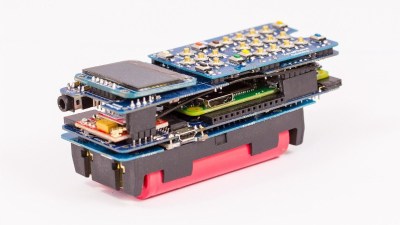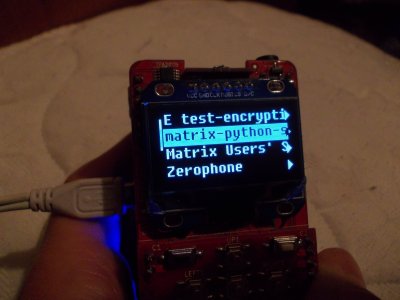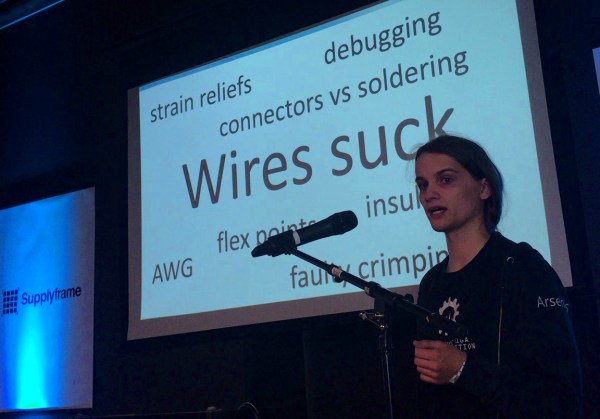In an earlier installment of Linux Fu, I mentioned how you can use inotifywait to efficiently watch for file system changes. The comments had a lot of alternative ways to do the same job, which is great. But there was one very easy-to-use tool that didn’t show up, so I wanted to talk about it. That tool is entr. It isn’t as versatile, but it is easy to use and covers a lot of common use cases where you want some action to occur when a file changes.
Linux Hacks585 Articles
Linux Fu: The Kitchen Sync
One of the great things about Linux and similar operating systems is they are configurable. If you don’t like something, there’s a great chance you can change it easily with a few entries in a file somewhere. For example, take bash — a very popular shell by any measure. If you want a different style of command line editing, there’s an option. You want the tab key to match files regardless of case? Another option. Usually, these are set in one of your so-called profile files like .bashrc in your home directory.
As long as you are sitting in front of your single computer working, this is great. You customize your .bashrc and other files to your heart’s content and then you work in an environment that acts the way you want it to. The problem is when you have a lot of computers. Maybe you have a web server, a desktop, a firewall machine, and a few dozen Raspberry Pi computers. How do you keep all the configurations the same? Then once they are the same, how do you keep them up to date?
Linux Fu: Share Terminal In Browser
The title of this post says it all: GoTTY is a program that lets you share Linux terminal applications into a web browser. It is a simple web server written in Go that runs a non-GUI program and can push it out a socket in such a way that a browser can display it and, optionally, let the user interact with it.
With the emphasis on security these days, that ought to alarm you. After all, why would you want a shell running in a browser? Hang on, though. While that is possible — and not always undesirable — the real value to this technique is to run a specific command line program in a browser window. Here’s a use case: You want users to remotely monitor a system using top (or htop, if you are fancy). But you don’t want users logging into the system nor do you want to require them to have ssh clients. You don’t want to install monitoring tools, just use what you already have.
If you could get the output from top to show up in a browser window — even if the users had no ability to input — that would be an easy solution. Granted, you could just run top in batch mode, collect the output, and write it somewhere that a web server could find it. Assuming you have a web server installed, of course. But then what if you did want some other features like taking command line options or having the option for (hopefully) authenticated users to interact with the software? Now that would be more complicated. With GoTTY, it is easy.
Building Portable Linux Devices: Never Been Easier, But Still Hard
We live in a Golden Age of single-board computers. There was a time when a portable computer that was any good was a relatively rare and expensive device, certainly not something you could expect to replicate for yourself. A Psion, or later a Palm or perhaps a WinCE device would have been a lot more than an impulse purchase, and could not easily have been replicated using the components then available to the experimenter.
Thanks to spin-offs from technology developed for set-top boxes and mobile phones we can now buy any one of a pile of different boards that have almost equivalent power to a desktop computer. The experimenter can leverage that computing power to create their own small portables. Zerophone creator Arsenijs Picugins spoke about the tricky parts of designing a LInux portable at the recent Hackaday Superconference. You’ll find his talk below the break, which makes for a fascinating primer for those tempted to walk in his footsteps.

Minor Details of Portables are the Majority of the Build
In theory, it’s pretty easy to use one of these boards to make a portable computer. Take one of the smaller members of the Raspberry Pi or Beaglebone families, add a battery and a display, and away you go. But as always the devil is in the detail, and for a truly successful build there are a wealth of variables to attend to.
In his talk, Arsenijs takes us through the challenges of power supplies, connectors, and interfaces. In particular there is considerable challenge to running an SBC from a battery small enough to be portable, as efficiency concerns and the ability to easily recharge make for a critical set of choices. Then we learn of another pitfall, that of using USB as a default interface. Power loss in converting 5V to 3.3V that is inconsequential for a desktop computer is a battery-killer in a small device, so we’re pointed at the array of alternatives.

Screen Size is a Tricky Spec to Settle
If you’ve been tempted by one of those cheap Raspberry Pi touch screens, you’ll certainly understand that while a full desktop on a screen the size of a playing card looks cool, the reality is almost unusable. Your device will require a user interface that fits its form factor, which from his experience, Arsenijs suggests is best achieved through the medium of buttons rather than a touchscreen on smaller screens. There are a variety of UI and display libraries he introduces us to which make the whole process significantly easier.
Arsenijs’ Zerophone Raspberry Pi smartphone was a finalist in the 2017 Hackaday Prize, and remains an exemplary portable project from which many others can gain inspiration. We are privileged that he was able to bring his experience to speak at the Superconference, and his talk makes for a fascinating watch.
Continue reading “Building Portable Linux Devices: Never Been Easier, But Still Hard”
Linux Fu: Controlling The Terminal
A Linux terminal has a lot more features than the TeleType of yore. On a TeleType, text spews out and scrolls up and is gone forever. A real terminal can use escape characters to do navigate around and emulate most of what you like about GUIs. However, doing this at the lowest level is a chore and limits portability. Luckily, all the hard work has already been done.
First, there’s a large database of terminal capabilities available for you to use: terminfo. And in addition, there’s a high-level library called curses or ncurses that simplifies writing programs to control the terminal display. Digging deep into every nook and cranny of ncurses could take years. Instead, I’m going to talk about using a program that comes with ncurses to control the terminal, called tput. Using these two commands, you can figure out what kind of terminal you’re dealing with, and then manipulate it nearly to your heart’s content. Let’s get started!
Linux As A Library: Unikernels Are Coming
If you think about it, an operating system kernel is really just a very powerful shared library that offers services to many programs. Of course, it is a very powerful library, but still — its main purpose is to provide services to programs. Your program probably doesn’t use all of the myriad services the kernel provides. Even a typical system might not fully use all the things that are in a typical kernel. Red Hat has a new initiative to bring a technology called unikernels to the forefront. A unikernel is a single application linked with just enough of the kernel for it to execute. As you might expect, this can result in a smaller system and better security.
It can also lead to better performance. The unikernel doesn’t have to maintain devices and services that are not used. Also, the kernel and the application can run in the same privilege ring. That may seem like a security hole, but if you think about it, the only reason a regular kernel runs at a higher privilege is to protect itself from a malicious application modifying the kernel to do something bad to another application. In this case, there is no other application.
Continue reading “Linux As A Library: Unikernels Are Coming”
New Part Day: A $6 Linux Computer You Might Be Able To Write Code For
The latest news from the world of cheap electronics is a single board computer running Linux. It costs six dollars, and you can buy it right now. You might even be able to compile code for it, too.
The C-Sky Linux development board is listed on Taobao as an ‘OrangePi NanoPi Raspberry Pi Linux Development Board” and despite some flagrant misappropriation of trademarks, this is indeed a computer running Linux, available for seven American dollars.
This board is based on a NationalChip GX6605S SoC, a unique chip with an ISA that isn’t ARM, x86, RISC-V, MIPS, or anything else that would be considered normal. The chip itself was designed for set-top boxes, but there are a surprising number of build tools that include buildroot, GCC and support for qemu. The company behind this chip is maintaining a kernel, and support for this chip has been added to the mainline kernel. Yes, unlike many other single board computers out there, you might actually be able to compile something for this chip.
The features for this board include 64 MB of DDR2 RAM, HDMI out (with a 1280 x 720 framebuffer, upscaled to 1080p, most likely), and a CPU running at just about 600 MHz. There are a few buttons connected to the GPIO pins, two USB host ports, a USB-TTL port for a serial console, and a few more pins for additional GPIOs. There does not appear to be any networking, and we have no idea what the onboard storage is.
If you want a challenge to get something compiled, this is the chip for you.














